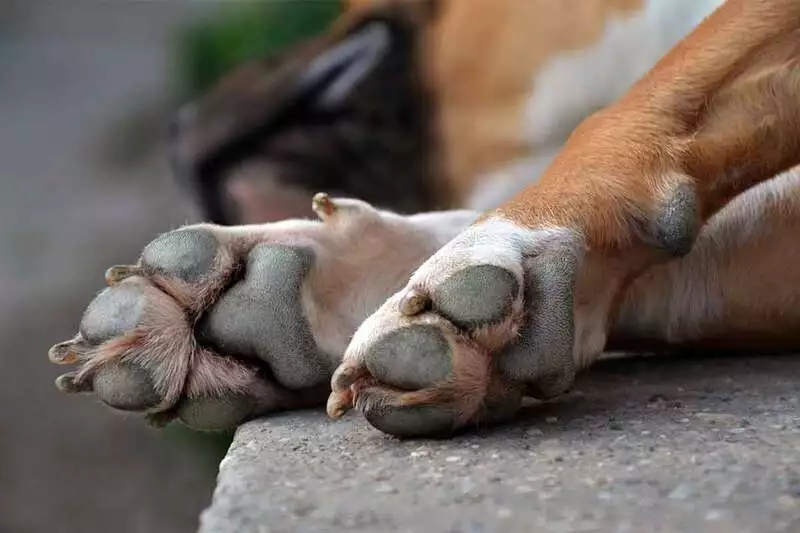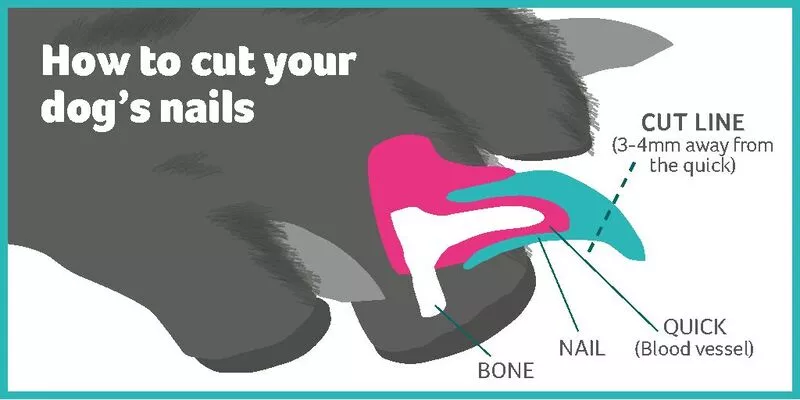As a dog owner, one of the things you should always keep is How To Trim Overgrown Dog Nails? If they grow too long, they can cause discomfort, and pain, and even lead to infections. Trimming your dog’s nails can be a bit daunting, especially if they’re overgrown. However, with some patience, practice, and a few tips, you can learn how to trim your dog’s overgrown nails safely and effectively.
How To Trim Overgrown Dog Nails? 6 Easy Steps
How To Trim Overgrown Dog Nails? includes the following 6 steps.
1. Gather the necessary tools
Before you start, gather all the necessary tools. You’ll need a pair of nail clippers specifically designed for dogs, styptic powder, and a treat to reward your furry friend. You may also want to have a file or grinder on hand to smooth out any rough edges after trimming.
2. Get your dog used to handling their paws
If your dog is not used to having their paws handled, start by getting them used to it. Gently hold their paw for a few seconds and give them a treat. Gradually increase the time you hold their paw, and always reward them with a treat. This will help your dog feel comfortable when you’re ready to trim their nails.
Read Also: Can Dogs Eat Pesto? All You Need to Know
3. Identify the quick
The quick is the pink part of the nail that contains blood vessels and nerves. You want to avoid cutting the quick as it can be painful and cause bleeding. With overgrown nails, the quick may be harder to identify. Use a flashlight to shine through the nail and locate the quick. Cut the nail just before the quick starts.
4. Cut the nails
Hold your dog’s paw firmly and use the nail clippers to cut the nail at a 45-degree angle. Be sure to cut straight across the nail and avoid cutting into the quick. If you accidentally cut the quick, use styptic powder to stop the bleeding. It’s better to cut a little bit at a time rather than trying to cut off too much at once.
5. Smooth out any rough edges
After trimming, use a file or grinder to smooth out any rough edges. This will help prevent your dog’s nails from snagging on carpets or furniture. Make sure to use a gentle touch and avoid grinding too much, as this can also cause discomfort.
6. Reward your dog
Finally, reward your dog with a treat and plenty of praise. This will help your dog associate nail trimming with a positive experience, making it easier to trim their nails in the future.
What’s The Correct Dog Nail Length?

The correct dog nail length varies depending on the size and breed of your dog. As a general rule, your dog’s nails should not touch the ground when they stand or walk. If you can hear your dog’s nails clicking on the floor, it’s a sign that they are too long.
To determine the appropriate length for your dog’s nails, examine them regularly and look for the point where the nail starts to curve. This is the point where you should start cutting. You want to avoid cutting into the quick, which is the pink part of the nail that contains blood vessels and nerves. If you accidentally cut the quick, it can be painful for your dog and can cause bleeding.
Are Overgrown Nails Painful For Dogs?
Yes, overgrown nails can be painful for dogs. When a dog’s nails grow too long, they can start to curl and dig into the paw pads. This can cause discomfort, and pain, and even lead to infections. Long nails can also alter the way a dog walks or runs, which can result in joint pain and other related problems. If left untrimmed, overgrown nails can cause long-term damage to a dog’s feet and overall health. It’s important to regularly check and trim your dog’s nails to prevent any discomfort or pain.
How Often Should I Trim My Dog’s Nails If They Are Overgrown?

If your dog’s nails are overgrown, it’s recommended that you trim them gradually until they reach the appropriate length. Once they are at the appropriate length, you should aim to trim your dog’s nails every 4-6 weeks. However, the frequency of nail trimming may depend on your dog’s lifestyle and how quickly their nails grow.
If your dog is active and spends a lot of time on hard surfaces like concrete, it may require more frequent nail trimming. On the other hand, if your dog is less active and spends most of their time on soft surfaces like grass, it may require less frequent nail trimming. It’s always a good idea to regularly check your dog’s nails and trim them as needed to ensure they remain at a healthy length.
When To See A Veterinarian
If you’re having trouble trimming your dog’s nails or if your dog’s nails are overgrown and curling into their paw pads, it’s a good idea to see a veterinarian. Here are some signs that indicate it’s time to take your dog to the vet for nail trimming or other nail-related issues:
Your dog’s nails are bleeding excessively during trimming
If you accidentally cut the quick and your dog’s nail is bleeding excessively, it’s important to seek veterinary care. Your vet can stop the bleeding and ensure that the wound doesn’t become infected.
Your dog’s nails are extremely overgrown
If your dog’s nails are extremely overgrown and curling into their paw pads, it can be painful and may require professional trimming. A veterinarian can safely and effectively trim your dog’s nails, and can also offer advice on how to keep them at the appropriate length.
Your dog is showing signs of discomfort or pain
If your dog is showing signs of discomfort or pain when walking, it may be due to overgrown nails or other nail-related issues. A veterinarian can examine your dog’s nails and paws to determine the cause of their discomfort and provide appropriate treatment.
Your dog has a nail infection or other nail-related condition
If your dog has a nail infection or other nail-related condition such as a broken nail, it’s important to seek veterinary care. Your vet can diagnose the issue and provide appropriate treatment to prevent further complications.
Overall, if you’re unsure about how to care for your dog’s nails or if you notice any signs of discomfort or pain, it’s always best to consult with a veterinarian. They can provide advice and treatment to keep your dog’s nails healthy and pain-free.
Conclusion:
How To Trim Overgrown Dog Nails? is a daunting task but you can do this so easily by following the above-mentioned steps.Trimming overgrown dog nails requires proper tools and techniques to avoid injuring the dog. Seeking guidance from a veterinarian can be helpful if unsure. Always prioritize safety.
Read Also: HOW TO TRIM DOG NAILS THAT ARE OVERGROWN
How do you cut a dog’s nails that are too long?
Hold the paw firmly and cut the nail at a 45-degree angle, avoiding the quick. Use a file or grinder to smooth out any rough edges.
What should I do if my dog has a black nail?
Examine the nail closely, use a bright light to see the quick, and trim a small amount at a time to avoid cutting into the quick.
What happens if dog nails get too long?
If dog nails get too long, they can curl and grow into the paw pads, causing pain and discomfort, and potentially leading to infections.

3 thoughts on “How To Trim Overgrown Dog Nails? 6 Easy Steps”